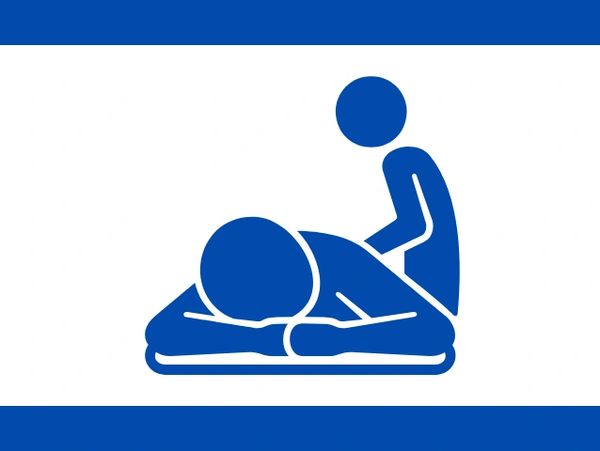Self-Care After Massage

After a massage, your body and mind are in a more relaxed and receptive state. Practicing proper self-care can help prolong the benefits of the massage and reduce the risk of muscle soreness. Here are some tips on hydration, nutrition, physical aftercare, and emotional well-being to help you care for yourself after a massage.
Scroll down to access a video library featuring lymphatic drainage routines and physical exercises designed to address common issues such as upper crossed syndrome, scapular stability, hip strength, and adductor strength and stability.

Hydration and nutrition
- Drink plenty of water: This is the most crucial step. Massage releases metabolic waste and toxins from your muscles. Drinking water helps your body flush these out and rehydrate your tissues. Aim to drink extra water for at least 24 hours after your session.
- Avoid alcohol and caffeine: These are diuretics and can dehydrate you, which works against the benefits of your massage. Opt for water, herbal tea, or coconut water instead.
- Eat a healthy, light meal: Your digestive system may be working more efficiently after a massage. A healthy snack or light meal can help you feel less lightheaded and provide your muscles with the nutrients they need to repair and recover.
Physical Aftercare
- Take it easy: Avoid strenuous activities and intense exercise for at least 12 to 24 hours. Your muscles need time to recover, and overworking them can lead to soreness and undo the therapeutic benefits.
- Gentle movement and stretching: While you should avoid strenuous exercise, light activity is beneficial. A gentle walk or some light, easy stretching can help prevent stiffness and keep your muscles and joints mobile.
- Use heat or cold therapy: If you have general muscle stiffness, a warm bath with Epsom salts or a heating pad can increase blood flow and promote relaxation. For any specific areas of inflammation or soreness, a cold pack can help reduce swelling.
- Take a warm bath or shower: A warm bath is a great way to extend the feeling of relaxation and can be enhanced with essential oils like lavender or eucalyptus, as well as Epsom salts (avoid using salt if you are diabetic).
- Practice lymphatic drainage: Gentle self-massage can help your lymphatic system move stagnant fluids and toxins that were released during your massage. Focus on the areas where lymph nodes are clustered, such as the neck, armpits, and groin. Use light, feathery strokes—the lymphatic system is just under the skin, so you don't need to apply deep pressure.
- See videos below for lymphatic drainage routines and exercises.
Mental and Emotional Well-Being
- Rest and relax: Give yourself time to rest and let your body and mind absorb the benefits of the massage. Don't rush back into a busy, stressful routine.
- Listen to your body: It's normal to feel a bit sore, especially after a deep tissue massage. However, if you experience sharp or unusual pain, pay attention and adjust your activities accordingly.
- Practice mindfulness: Engaging in a quiet activity, such as reading a book, journaling, or practicing a short meditation, can help you prolong the sense of calm and centeredness you feel after a massage.
Self-Care Video Library
Lymphatic Drainage 5-Minutes a Day
Here is a short routine with Kelly Sturm (DPT) to get your lymphatic system moving, which can be done in under 5 minutes. Do this immediately after your massage and every day for a few days to help the body eliminate metabolic waste.
Full Body Lymphatic Drainage Routine
A step-by-step guide through a full-body lymphatic drainage routine with Kelly Sturm (DPT) to help move fluid for a healthy lymphatic system. A great way to help stimulate the lymphatic system after massage and between sessions.
Upper Crossed Syndrome Exercises
This video by Physical Therapy 101 demonstrates top treatments for upper crossed syndrome. Upper crossed syndrome can lead to forward head posture, neck pain, and rounded shoulders, resulting from tightness in the chest musculature and weakness in the postural support muscles.
Scapular Stability
A short video from Reach Rehab demonstrates resistance band exercises to improve scapular stability.
Hip Strengthening Exercises
In this video, Dr. Kristie Ennis guides you through a quick and effective 5-minute routine designed to strengthen your hips and keep you pain-free. Whether you’re dealing with hip discomfort or want to improve your hip stability, these targeted exercises will help you build strength and flexibility.
One Exercise for Stronger Hip Muscles
Dr. Stefan Becker explains the one exercise he and his patients do to train their hip muscles to be stronger and more stable.
Adductor Strength and Stability
Many standard adductor stretches can actually irritate your knees and hips. Eric Wong from Precision Movement teaches three exercises to safely strengthen those muscles and transfer that strength and stability to life and sport.
Copyright © 2025 Gudjon Bergmann DBA Mindful Hands Massage, 324 Riverwalk Dr, Suite 308, San Marcos - All Rights Reserved.